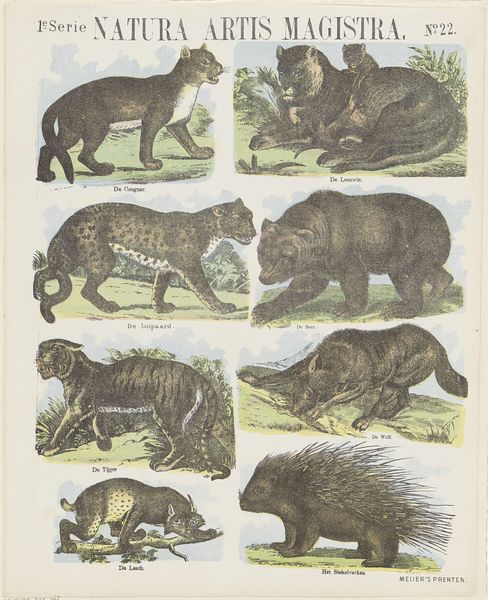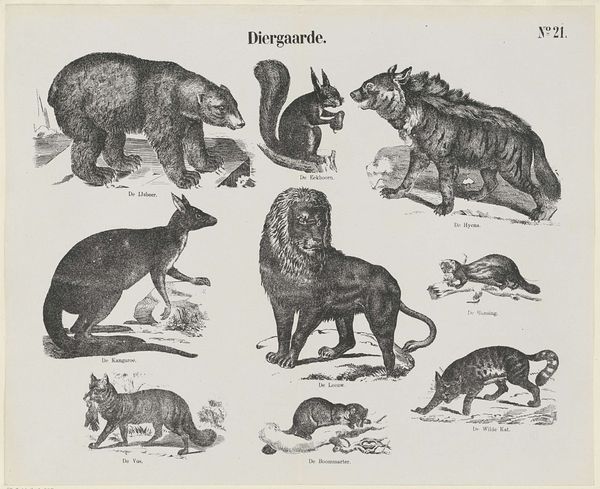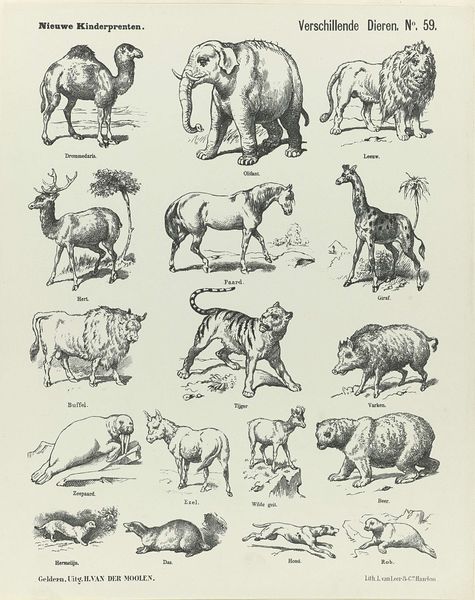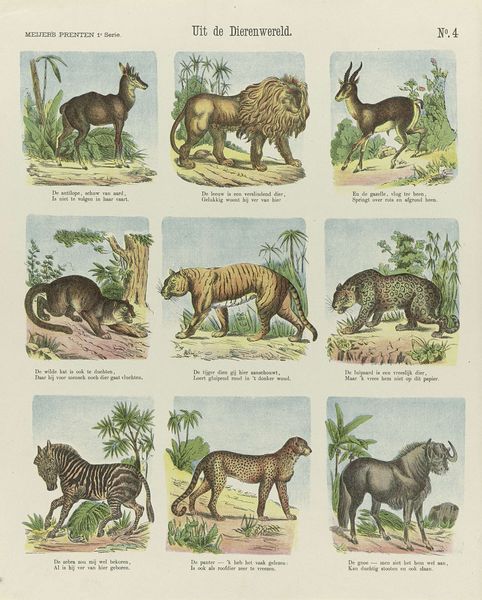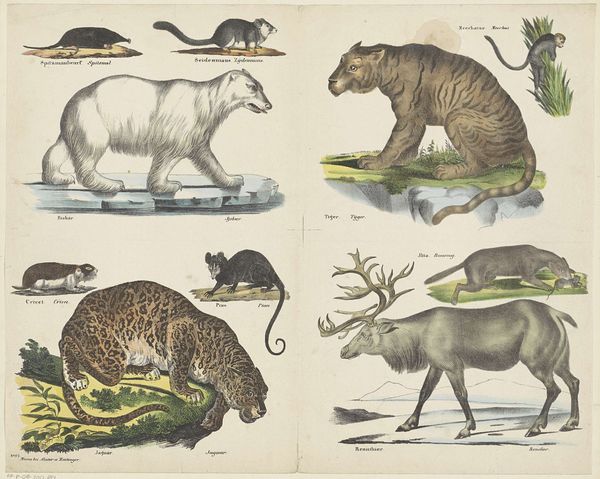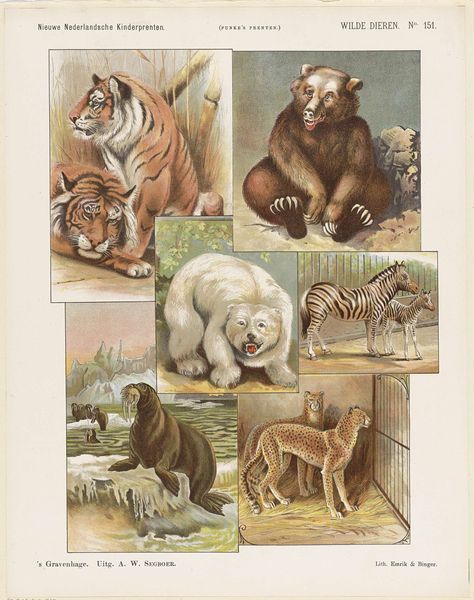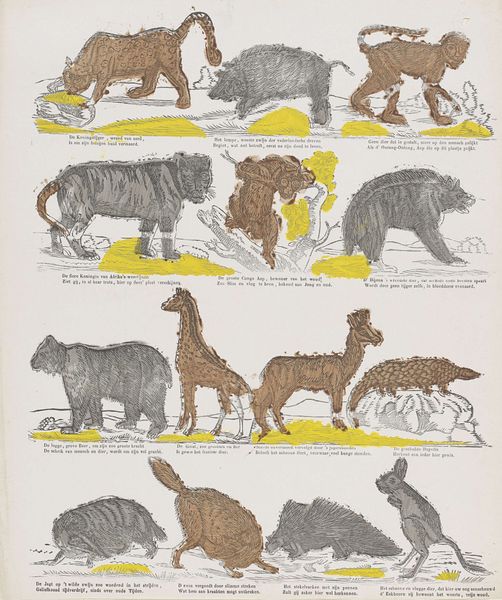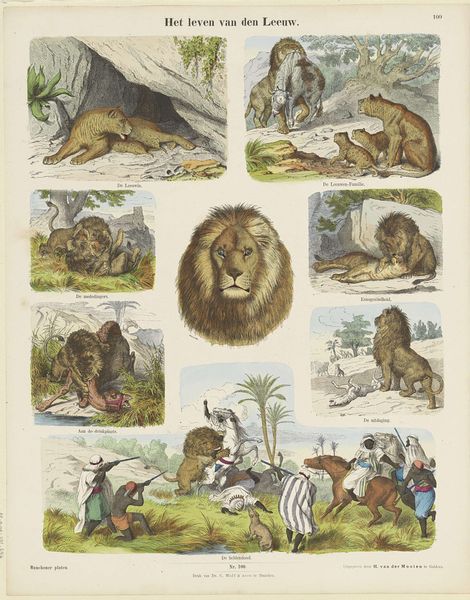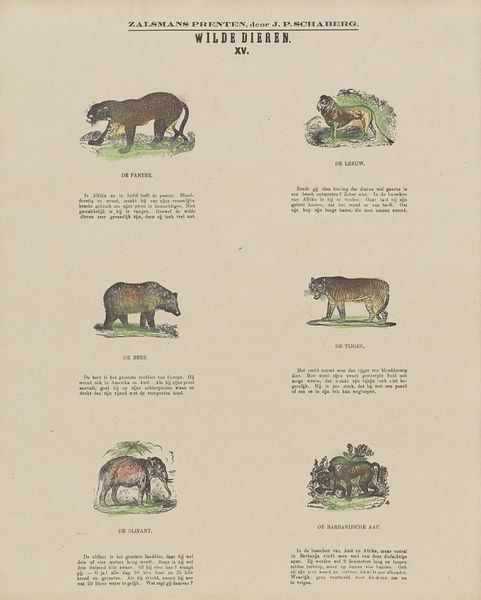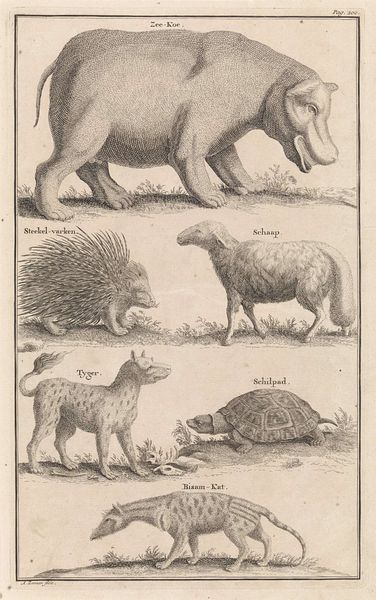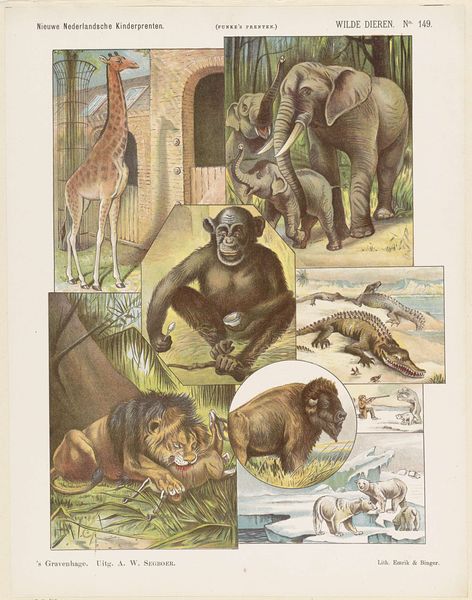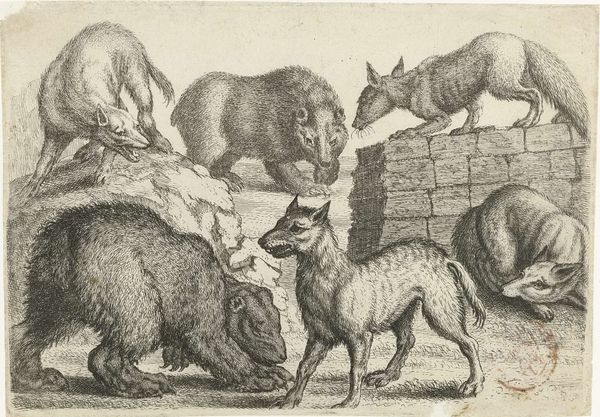
drawing, print, ink, engraving
#
drawing
# print
#
pen sketch
#
pencil sketch
#
ink
#
ink drawing experimentation
#
genre-painting
#
engraving
#
realism
Dimensions: height 428 mm, width 343 mm
Copyright: Rijks Museum: Open Domain
Editor: This print, "Diergaarde," created around 1873 by De Ruyter & Meijer, presents a fascinating collection of animals rendered in ink and engraving. It has such a wonderful educational poster vibe to it, reminding me of old biology textbooks. How would you interpret this work, given its illustrative nature and choice of animals? Curator: It’s interesting that you mention the educational aspect. Think of how potent images of animals, real or imagined, were for conveying symbolic meaning back then. These weren't just representations; each animal held layers of cultural associations. What about these animals resonates most with you? Editor: Well, the tiger feels the most loaded, perhaps because it's so overtly symbolic of power and danger. But even the more mundane creatures, like the bear and wolf, have these deeply embedded narratives around them. Curator: Exactly. These depictions are drawing upon centuries of animal allegory. The lion, for instance, always signals royalty and courage. The wolf might signify both cunning and guardianship, depending on the cultural context. Does that shift your perspective on this collection as a whole? Editor: Definitely! I hadn’t considered how the selection itself creates a narrative, highlighting particular virtues or vices through this collection. Curator: The artists were, knowingly or not, channeling these collective understandings and emotions tied to those animals, which in turn became embedded in art itself, and then perpetuated by images like this. Editor: It is amazing to think about how our present understanding of the world has evolved, being based on perceptions filtered through a series of lenses that reach so far into the past. Thanks so much! Curator: It was my pleasure; noticing is at the very beginning of everything that is good in this world.
Comments
No comments
Be the first to comment and join the conversation on the ultimate creative platform.
